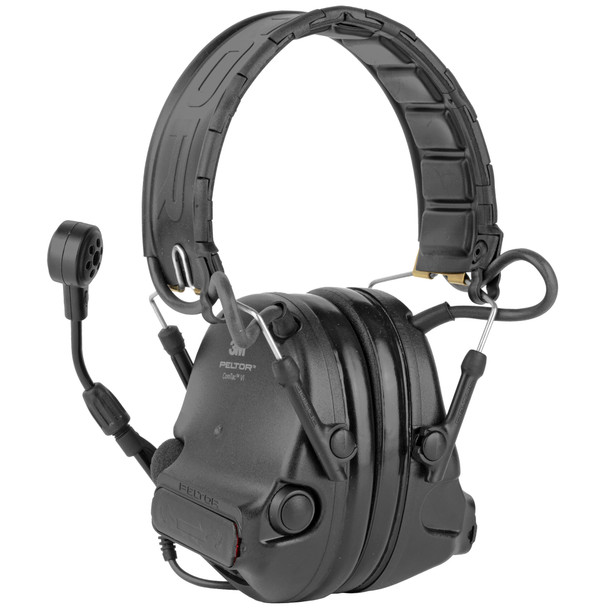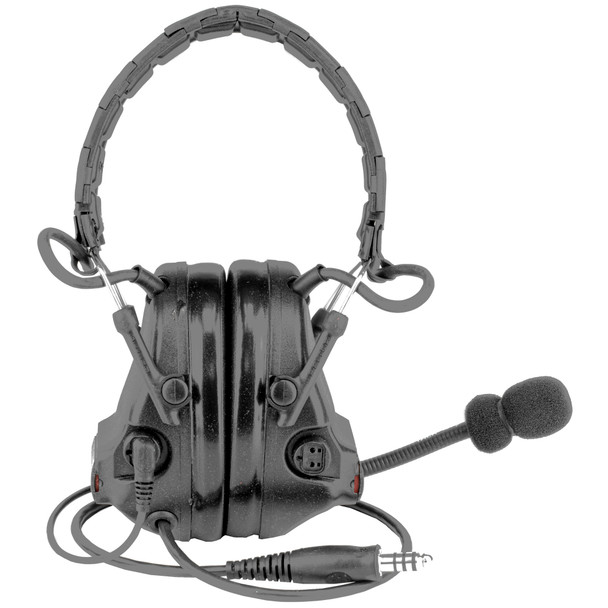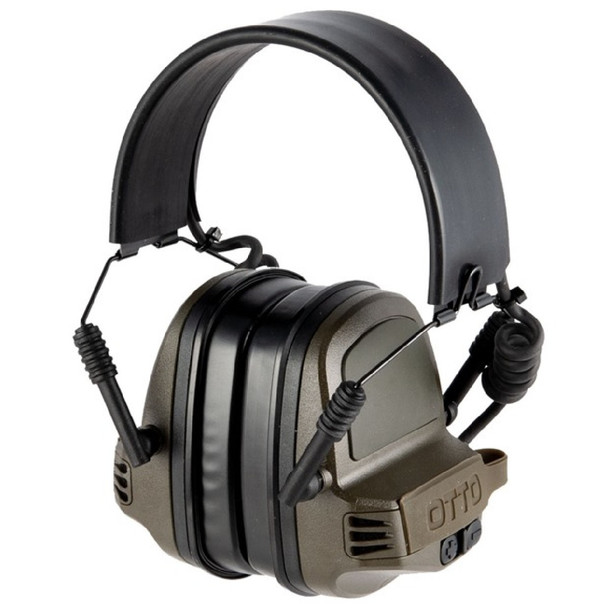Hearing protection - battlesteel.com
While warcraft is all about danger, there is one type of damage often overlooked when preparing for a mission. We are talking about damage done to your hearing. Every soldier gets exposed to loud sounds sooner or later; this is a part of the job. And protecting your hearing organs is as important as protecting your body with a ballistic vest.
Let’s take a closer look at what tactical hearing protection is. But first let us underscore the utter importance of hearing protection.
The importance of hearing protection
Hearing is one of our major senses. Through hearing we communicate with each other, get aware about surroundings, and identify potential threats. Hence protecting your hearing seems reasonable. Human hearing apparatus is very delicate and fragile. Damaging it is easier than it seems, especially when it comes to typical tactical missions with a lot of shooting, explosions, and loudly working military vehicles. No wonder, partial or complete hearing loss is still one of major disabilities among military veterans today.
The VA reports about 1.3 million cases of financial compensation for hearing loss as of 2020 FY. That’s a lot. And even more (2.3 million) received compensation for tinnitus. And if that wasn’t enough, a number of researches display a clear connection between the loss of hearing and certain mental diseases.
Adequate hearing protection devices would prevent these sacrifices. Wearable headsets and ear plugs offer protection for ears and prevent injuries caused by loud sounds.
What about non-military users? Do law enforcers and casual shooters need hearing protection too? Yes, certainly. Even at a shooting range, sounds are loud enough to seriously damage your tympanic membrane.
Main sources of loud sounds
The Center for Disease Control and Prevention identifies sounds louder than 75dBA as unsafe health. Sound volume above 85 dBA causes serious annoyance and in the long run can even be harmful if you’re exposed to such loud sounds often or for prolonged periods. Sounds above 120 dBA cause immediate damage to hearing.
Now, let’s see what sounds a typical military environment produces:
- 80-110 dBA – military vehicles;
- 87-110 dBA – ships and operating motors;
- 90-115 dBA – aircrafts takeoff and landing;
- 100-120 dBA – typical industrial operations;
- 125-145 dBA – noise during flights;
- 140-175 dBA – weapon shots;
- 125-185 dBA – large caliber weapon shots;
- 175+ dBA – explosion sounds;
- 200+ dBA – Howitzer shots.
You can clearly see that typical sounds around our protectors are far beyond safe levels. They are desperately in need of sufficient hearing protection!
And here comes the dilemma: while you certainly don’t want to be stunned with too loud noises, you still need to hear the speech of your partners, and remain aware about what’s going on around you. That poses a problem: the hearing protection device must dampen sounds that are too loud, but leave everything else intact or even amplify it to allow a user hear the background sounds and communicate. Efficient solution to this contradiction is what makes tactical hearing protection gear stand apart.
Hearing protection features to pay attention to
Professional tactical hearing protection devices offer a range of functions protecting against loud sounds, but allowing them to stay aware of the situation and remain online. Here is what you should look at regardless whether you purchase hearing protection at BattleSteel or in a brick-and-mortar shop.
Passive hearing protection
First things first – a hearing protection headset must physically reduce the intensity of the sound. This is called attenuation. And the level of such noise attenuation indicates how good a wearer of the headset is protected. Since we are talking about weapon noises of extraordinary high magnitudes, you need at least an above average passive hearing protection.
SNR
Each hearing protection device has two parameters describing its attenuation level. The first one is Signal to Noise Ratio, or SNR. Normally, this value tells how the level of a signal compares to the level of a noise. Higher values mean the signal is easier to hear.
But in the case of protective headsets, SNR shows how much noise the audio insulation of the tactical headset can absorb. For instance, SNR of 30 dBA means that the magnitude of the incoming sound is attenuated by 30 dBA in the range of relevant frequencies.
NRR
The second value you need to know about is Noise Reduction Rating or NRR. The parameter measures the effectiveness of the tactical hearing protective device in reducing noise levels. Sounds pretty similar to what we’ve said above, but there is a difference in how the actual values of SNR and NRR are measured.
How to calculate?
Some manufacturers stick to SNR, while others use NRR to rate their products. Here is how you can calculate the actual parameters of a hearing protection headset to use.
Suppose, the sound environment is 90 dBA. A headset with SNR of 26 dBA will reduce the noise to
90 – 26 = 64 dBA.
Add some 4-5 dBA to reflect the real-world changes in the sound, and you will end up with 64-68 dBA. This is what a wearer of the headset will hear.
As for NRR, the procedure is similar. Let's say the noise reduction headphone has NRR of 26. Subtract 7 from this value:
26 – 7 = 19 dBA.
Then, subtract this new value from the sound level of the environment:
90 – 19 = 71 dBA
This value gives you the lower limit. To reflect the real-world conditions, repeat the same calculation as above, but first divide the value of (NRR – 7) by 2. You should get:
26 – 7 = 19 / 2 = 9 dBA
Then, subtract this value from the noise level:
90 – 9 = 81 dBA
This gives you the range of protection: 71-81 dBA
Active hearing protection
If there’s passive, there must also be active hearing protection. The purpose of the active protection is to passively attenuate the majority of noise (if not all), and then reproduce the blocked sounds using the microphone and speaker headphones system.
Such active protection works better than a passive one, because it can reduce sounds of almost any magnitude down to a certain safe threshold value. This way, even the deafening thunder of guns and explosions will not damage the wearer.
Moreover, active hearing protection systems can actually amplify low sounds to make them hearable. This can greatly improve survivability of soldiers and SpecOps, thanks to augmented hearing. Many contemporary headsets such as 3M Peltor are intelligent enough to distinguish between harmful noises and sounds of natural environment, and only dampen what’s dangerous while leaving the typical background sounds intact to help the user stay awake.
AUX input
An auxiliary 3.5 input is a necessary part of the protective headset. Why? Because you can plug in a radio set there and remain connected while still having your hearing protected.
Often, hearing protection devices also offer other connectivity options, such as the military U/174 Plug that allows instant plugging in the headset to most aviation intercom equipment.
Sound quality
In the heat of a battle you want you communications to be as clear as possible. Speech and voice commands must be 100% recognizable, so the headset must deliver almost Hi-Fi quality. Misunderstanding is not allowed.
Durability
Another important feature is durability of the headset. You probably will be using it in a range of circumstances that are far from ideal to say the least. Hence, your hearing protection must survive everything you may face. When you choose a tactical hearing protection device, make sure it is ready for military field use and is durable enough to withstand shocks, stresses and only occasional servicing.
Luckily for us, there is a durability standards developed by U.S. Military called MIL-STD-810. The standard defines the test criteria to make sure the equipment can survive the conditions it will experience throughout its service.
So, if the hearing protection equipment is certified as MIL-STD-810 compliant, this means it is designed to survive certain duration and level of stress and remain operable during the entire service.
Waterproof
If you plan using a tactical headset in wet conditions, you need to make sure the hearing protection device is waterproof. Crucial points are: battery section, microphone, and speakers. Some models of hearing protection headsets can even be submerged underwater without any loss of functionality.
Comfort
Comfortable wearing is much more important that one may think. And there are literally hundreds of tiny nuances. If ignored, each one of them can easily make wearing the protective gear a pain. Now, add on top long hours a warfighter wears the headset and you’ll get the hang of why comfort is so vital.
What to look at? First of all, there are two types of headsets: removable ones and ones to wear with a tactical helmet. Make sure to buy the right type of a headset.
Comfortable headband is a must if you plan to wear the protective gear for longer periods. Soft cushions not only guard you from noises, but also reduce the strain to your ears and temples. Pay attention to weight. Every excessive ounce will eventually feel like a ton on your neck after a few hours.
Audio comfort is equally important. Adjustable attenuation lets you choose the preferred way the hearing protection works. Often, tactical headsets have presets for various scenarios: a patrol mission, a guard mission, air transport and so on, so you can prioritize what’s important in each particular case. Also, advanced tactical hearing protection headsets are smart enough to amplify soft sounds for enhanced hearing while lowering sounds with large magnitude.
Battery life
Last but not least is battery life. The functionality of your protective headset depends a lot on the battery, so make sure the device can work long enough to not cause you troubles. Typically, a hearing protection headset is powered by one or two AAA batteries, but there are also rechargeable models.
Conclusion
Selecting the most fitting hearing protection option for tactical environments can be a hard task. That is why at BattleSteel we offer thorough pre- and post-sale assistance to every customer to help them get the most for their budgets. If you are not sure what kind of hearing protection you need in your case, please don’t hesitate to contact us.
Recent Posts
-
How Much Does a Bulletproof Vest Cost? The Answer is More Complex than You Think
Looking at the price range for bulletproof vests, you may feel a little bit puzzled. How come the pr …2024-07-25 -
Level III or Level III+ Body Armor — Is There Really a Difference?
So, you were scanning a body armor catalog and seeing “Level III+” label here and there asking yours …2024-07-10 -
Choosing the Right Optical Sight in 2024: A Comprehensive Guide
IntroductionOptical sights are critical tools for enhancing accuracy and target acquisition in vario …2024-06-26



